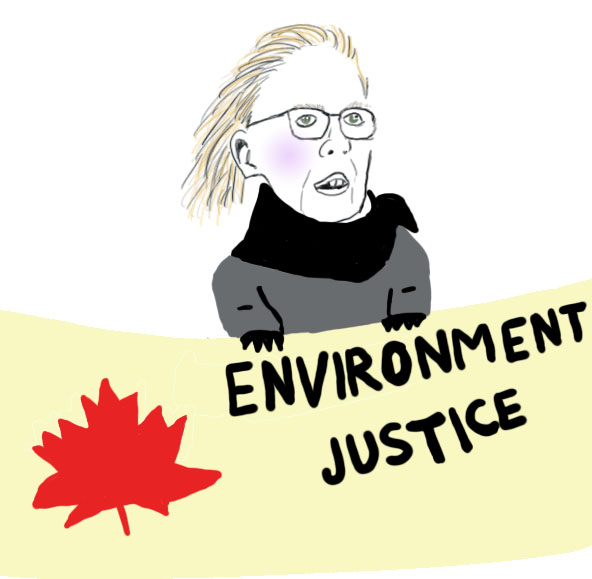Canada has established itself as a prominent player in the mining sector over the past fifty years, which has forced the Canadian government to navigate the advantages and challenges of mining both at home and overseas. With this year’s federal election, policies regulating Canada’s overseas mining industry may change as new parties come into power. This election is a chance for ethical mining policies to undo some of the damage caused by Canada’s destructive past.
A brief history of Canadian mining
Canadian mining companies’ first forays outside the Canadian border and into Latin America were in the early 1960s; the International Nickel Company (INCO), now Vale Limited, forged a relationship with Guatemalan juntas and created the first Canadian mining concession in Latin America. The success of this tenuous partnership was frequently threatened by the social and political unrest in Guatemala, but nevertheless strengthened over the course of the next two decades as the value of gold increased.
In 1971, following the Bretton Woods Monetary Agreement, which regulated commercial financial relations among Canada, the U.S., and other large nations, fixed exchange rates for gold were abandoned. Gold was now sold at a minimum of $35 per ounce, and its price would be determined by the free market. By the end of the 1970s, gold surpassed 600 dollars per ounce, which was especially important because precious metal mining became central to the Canadian economy. This increase in the profitability of gold created a new gold rush, leading mining companies to expand their search for gold to the rest of the Americas. At the same time, the American company Newmont Mining Corporation discovered huge deposits of finely dispersed gold in Nevada, deposits which were undetectable to the naked eye. “Invisible gold” was much harder to mine due to its size and need for a higher processing, so technicians developed a new method that would make it easier to reap: open pit mining.
Investors quickly became interested in open pit mining because of its low start-up and production costs. More gold could be collected in an open pit mine than in an underground mine, and in less time. Gold was found and mined all over North and South America, but Daviken Studnicki-Gizbert, a McGill history professor, writes in his article “Canadian Mining in Latin America (1990 to Present): A Provisional History” that “the real El Dorado was still located in Latin America, where historical gold and silver districts were well-known and now, with the advent of new low-grade mining techniques, [are] transmuted into world-class reserves.”
When mining companies first expanded into Latin America, the countries in the region still maintained control over their natural resources, and mining companies were very closely monitored and taxed. However, after a debt crisis in Latin America during the 1980s, neoliberal policies led to new mining codes, new regimes, and new relationships between governments and big business. Specifically, the Latin American states were compelled to funnel capital into the mining sector. During this period, more than ninety governments across the ‘Global South’ loosened their mining regulations to attract more international investment in mining. These new mining codes allowed companies to access mineral deposits for free, and removed investment caps in national mining projects. Most importantly, mentions Studnicki-Gizbert, “mining concessions enjoyed legal pre-eminence over other forms of land tenure on the strength of the principle that the development of mineral resources was in the public interest,” meaning that mining companies could freely displace landowners. These new mining reforms increased the influx of foreign mining capital – mainly due to the Toronto Stock Exchange – into Latin America, mushrooming mining projects in the area.
By the 1990s, Canadian mining companies were purchasing mining projects and concessions so quickly that, within a decade, there were more than a thousand mining projects in place. By 2007, there were more than 1,500 projects operated by Canadian mining companies in Latin America.
Neoliberal reforms achieved their goal of attracting international capital to Latin America, but the reach of mining corporations invaded and deteriorated the lives of the local people through “forced, surreptitious or illegal acquisition of land […] displacement and expulsion […]; the disruption of ground waters and wells […]; the contamination of surface waters and human bodies […]; the mass influx of workers contracted from outside the community […]; the associated upsurge in alcoholism and drug trafficking; the exacerbation of violence (often sexual),” writes Studnicki-Gizbert. As the number of mining projects expanded, mining companies increased pressure on communities with their presence, leading to resistance by local inhabitants. As these protests grew, ‘security’ forces were brought in to suppress opposition, leading to more violent confrontations. Today, mining companies in Latin America continue to face opposition from local communities.
The following sections summarize each federal party’s mining platform. They amalgamate information from the different campaign websites, interviews with federal party representatives published in the Northern Miner newspaper, and a document produced by the Prospectors and Developers Association of Canada (PDAC). The Conservative Party section takes a look at the party’s last nine years of federal rule with regard to mining policies.

The Conservative Party of Canada
Over the last decade, the Harper government has heavily supported Canada’s mining sector through measures such as the Mineral Exploration Tax Credit (METC), helping junior mining companies raise capital for exploration. The majority of the hundreds of mining companies listed on the Toronto Stock Exchange are precisely this kind of small mining company that focuses on exploration and development of mineral deposits rather than extraction. Among mining companies in Canada, 92 per cent are not large enough to run their own industrial mines. The METC runs on a flow-through share (FTS) system, where investors can buy flow-through shares, and their money goes to help fund different companies. After a period of time, usually one or two years, the investments are combined into a mutual fund, where investors can sell their shares freely. This system provides tax shelters for people in high tax brackets because the investments are tax-deductible, and investors can deduct expenses incurred by the company. The Conservative government relies on the FTS system to provide funding for many junior mining companies who are unable to raise enough capital to move their mines into the production stage. Since 2006, junior mining companies have raised $5.5 billion to be put toward mining exploration through the FTS system.
The Harper government has also provided strong support to the development of Corporate Social Responsibility (CSR) in the mining sector. On the Natural Resources Canada website, corporate social responsibility initiatives are defined as “the voluntary activities undertaken by a company, above and beyond regulation, to operate in an economically, socially, and environmentally sustainable manner.” Compliance is voluntary, so companies are free to choose which regulations they want to abide by. The website goes on to say that “due to the large number of Canadian mining projects around the world, it is impossible for the Government of Canada to keep track of the CSR activities of every company.”
The Conservative mining platform for the 2015 election is based on the promise of creating jobs and maintaining economic prosperity. If elected, the Conservative government says it would expand the METC for another three years to encourage more northern and overseas mining exploration and investment. According to PDAC, the Conservative government prides itself on having “reduc[ed] the tax burden and costs for the mining sector in every budget since forming government,” and that “ensur[ing] that Canada remains a global leader in mineral exploration and development” is central to their platform. A Conservative government would also invest in the Targeted Geoscience Initiative to encourage the private sector to invest in more mineral exploration, they say. When considering the effect of mining on Indigenous communities, the Conservatives allege they “promote the full participation of First Nations in the economic benefits of Responsible Resource Development”, according to PDAC. Greg Rickford, a Conservative MP and the Minister of Natural Resources, said that he was “proud of the fact that the natural resources sector is the largest private employer of First Nations people in Canada.”

The Liberal Party of Canada
In an interview with the Northern Miner, the Liberal Party says it intends to enact an “immediate, public review of Canada’s environmental assessment processes,” and impose vigorous oversight measures for mining corporations. PDAC mentions that the Liberal platform highlights “fair and efficient regulatory processes, a strong commitment to trade, a reliable pool of skilled workers, and perhaps most importantly a real commitment to investing in critical infrastructure”. The Liberal Party’s platform says it plans to invest an additional $200 million annually into natural resource sectors, like mining, to promote sustainable and clean practices. It also claims it will double the federal investment in infrastructure from $65 billion to nearly $125 billion over the next ten years, with the hopes of creating a greater budget for infrastructure leading to the north and lead to the building of roads, bridges, ports, and other transportation developments, connecting rural mining sites to the national market. According to the Liberal Party’s interview with Northern Miner, the federal party promises that, if elected, it would advocate for “transparency, accountability, and sustainability in the mining sector,” and ensure that government science will be transparent and easily accessible to the public. Additionally, it says it will support flow-through shares, and maintain the corporate tax rate of 15 per cent. The party says it hopes to increase investment in skills training so that mining jobs become more accessible. The government will also adopt Canadian CSR policies, and will act on the recommendations of the CSR Advisory Group.
With regards to Indigenous peoples, the Liberals told the Northern Miner that they want to renew “the relationship between the federal government and Indigenous peoples in Canada based on recognition, rights, respect for treaties, the terms, spirit and intent of the original treaty relationship, the right to self-government, the United Nations Declaration on the Rights of Indigenous Peoples, and the decisions of our courts.” It says it intends to complete a “full review of regulatory law, policies, and operational practices” in collaboration with First Nations, Métis peoples, and the Inuit to guarantee the Canadian government is abiding by the conditions of its treaties with Indigenous peoples. The Liberal Party says it believes that Indigenous peoples have a constitutional right to be consulted concerning mining projects operating on their lands.

The Green Party of Canada
The Green Party platform says it hopes to enact a “triple bottom line analysis, measuring social, environmental, and economic costs and benefits” test on mining practices. It told PDAC that it will only endorse mining where “it does no lasting harm to the environment and takes place with the necessary social license, including the free, prior and informed consent and participation of local Aboriginal and non-Aboriginal communities.” The Greens also said that they want to establish “clear, scientific, nation-wide standards, protecting the public interest while reducing delays and compliance costs,” and have pledged to support full-cost accounting and flow-through shares. The Green Party also says it intends to create tax benefits to reward companies that recycle metals used in mining procedures, and it hopes to incorporate clean technology into new mining techniques. It says it would ensure that mining companies have plans in place to handle environmental issues, and that these plans are pre-funded and can cover both short-term and long-term solutions. All mining companies must also be insured for environmental complications. Additionally, its government would carry out more vigilant monitoring of the effects of mining on water, agricultural lands, and air quality. They would count on the public to aid in observing and reporting the practices of mining corporations. The Green Party says it would end asbestos mining in Canada and phase out chrysotile asbestos, should it be elected. It also hopes to create an Arctic Protected Zone, where no country will be able to dig for minerals.
This party also hopes to pass a Corporate Social Responsibility Act to operate as a new regulatory framework and to ensure that mining companies abide by practices that are the least damaging to the environment. The Greens see the tension between the Canadian government and Indigenous peoples as stemming from the fact that Indigenous peoples are not treated as equal partners in mining projects. Their party claims it wants to rectify this in the future and collaborate fully with Indigenous peoples by including them in the decision-making process.
While the Green Party supports the international expansion of Canadian mining, it also searches for more accountability for Canadian natural resource companies operating overseas. It says it does not support Canadian companies that exploit the land of local communities, and it seek legal recourse for people who have been wronged. The party claims they will facilitate the creation of an ombudsman to guarantee that Canadian companies use responsible and sustainable extractive methods.
The New Democratic Party (NDP)
The NDP told the Northern Miner that they want to execute a “robust and complete environmental assessment process” and sees mining as a vital sector to our economy and supports the METC. The party claims it aims to improve conditions for junior mining companies in particular, and to support them by expanding their credit. At home, the NDP says it hopes to invest in roads, bridges, and ports so that mining projects up north and in the Arctic can effectively send their products to international markets. In the PDAC report, the NDP detailed their plans to implement an Innovation Tax Credit that would “encourage investments in machinery, equipment, and property used to boost research and development of new products and services.” The party also says in their platform that it wants to reduce the small business tax from 11 per cent to 9 per cent to support small businesses that work with mining corporations. Overseas, the NDP wants mining companies to protect Canada’s reputation and is willing to help mining companies obtain a social license before beginning projects. The party claims to advocate for a sense of social responsibility among mining corporations. It hopes to “adopt a strong effective legal corporate accountability framework for Canadian companies operating abroad, including clear standards with robust sanctions for non-compliance,” according to the Northern Miner.
A personal take
Currently, under the Conservatives, there is no system in place to hold mining companies accountable for their actions overseas. An Office of the CSR counsellor position briefly existed; the counsellor was meant to facilitate conversation between mining corporations and local populations in conflict. However, the counsellor was given almost no authority, which left them unable to investigate any accusations against mining corporations, and the whole investigative process was voluntary. On multiple occasions, the mining companies accused of environmental and labour rights violations by local communities simply withdrew from the process. In October 2013, well before their term was up, first CSR Counsellor Enriqueta Evans did too. It is also worth noting that the Harper government has redirected funding gathered through taxes from the Canadian International Development Agency to several companies’ CSR efforts, so not only do many companies not follow CSR policies, but the ones that they do are subsidized by taxpayer money.
Seeing as the Green Party is the only one who has a plan in place to handle international mining conflicts and human rights abuses, it would appear to be the best ones to vote into office with regard to mining. Elizabeth May, the party leader, has a long history of fighting back against mining companies; she made two amendments to the Pipeline Safety Act, Bill C-46, earlier this year. And, with Plan Nord beginning in Quebec, mining regulations and policies will have a major impact in the near future on how companies operate both in Canada and abroad.
To put it simply, the Conservatives have been in power for nine years and have not, in that time, supported ethical mining practices. It is time for a change in governments; perhaps a new party will be able to right the wrongs created by Harper’s negligent policies.
